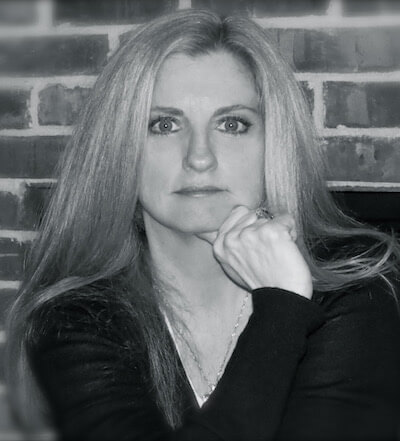I get a lot of questions from readers about how I write my Rachel Ryder series, so, today I’m peeling back the curtain on the electrifying process of writing detective fiction. Whether you're a seasoned writer or a curious reader, hopefully this will provide some insight.
Step 1: Dream Up the Perfect Plot
Writing a detective story starts with one crucial element: a killer plot (pun intended). The heart of any good detective novel is a mystery that keeps readers on the edge of their seats. For me, it often begins with a single, nagging question: "What if?" What if a seemingly mundane artifact holds a deadly secret? What if a peaceful small town harbors a sinister killer?
Once I have my "what if," I start plotting backward. I know the ending, the big reveal, and then I unravel the story in reverse. This method helps me plant clues and red herrings like a breadcrumb trail, leading readers through a maze of suspense and intrigue. Often though, I finish an outline and then change up the story while I write. Writers will say their characters screw things up and do their own thing. Before I began my writing journey, I thought that was ridiculous. I’m here to tell you, it’s not. It happens ALL THE TIME.
Step 2: Create Your Detective
Every great mystery needs a brilliant detective. A sleuth can be anyone—a gritty police officer, a quirky private investigator, or even an amateur sleuth with a knack for finding trouble. My protagonist in my Rachel Ryder series is obviously Detective Rachel Ryder. She’s a hot mess, but a tough cop with an intense backstory and a huge desire for justice, no matter what it takes.
Character development is key. Readers should be invested in a detective’s journey, flaws and all. They need quirks, a dark past, or a unique hobby. And don’t forget the sidekick! A trusty partner in crime-solving adds depth and a dash of humor to a story. Rachel’s sidekick isn’t really a sidekick. He’s an important character, Rob Bishop, her partner.
Step 3: Build the World
Setting plays a crucial role in detective fiction. Whether it’s the foggy streets of London, a sleepy village in the English countryside, or the bustling urban jungle, the setting should be immersive and atmospheric.
I like to sketch out detailed maps of my fictional towns, noting key locations like the detective’s office, the crime scenes, and the local bar where vital clues are often discovered. This helps me keep the geography consistent and adds a layer of realism to my world-building. I did model Hamby, Georgia after a town called Milton, Georgia, so feel free to Google it for a look!
Step 4: Weave the Web of Lies
Ah, the red herrings—those delightful false leads that keep readers guessing. Planting these misdirections requires careful planning. Think of it like weaving a web of lies. The key is to make them plausible enough to divert suspicion but not so obvious that readers see through them instantly.
It’s my least favorite parts in the outlining and writing process because it can be so hard!
One of my favorite tricks is to give every character a motive. Everyone in the story has something to hide, and it's Rachel’s team (and the readers) to sift through the secrets to find the truth.
Step 5: Consult the Experts
Now, let’s talk about adding that authentic touch. Nothing breaks the immersion of a good mystery like inaccurate details. That’s where consulting experts comes in. I’ve chatted with police officers, forensic scientists, drug enforcement agents, Georgia Bureau of Investigation agents, lawyers, and even a real-life private investigator to get my facts straight.
Experts aren’t just to keep things real, they can also inspire new plot twists. I’m not shy, I reach out to experts and ask for help. They usually love it, though a time or two I heard a dial tone, but still, most are thrilled to share their knowledge, especially when it’s going to be used to craft a thrilling story.
Step 6: The Big Reveal
The climax of a detective novel is the moment readers live for—the big reveal. This is where all the clues come together, the detective unveils the killer, and readers gasp in shock (hopefully). Crafting this moment requires precision. Every clue should make sense in hindsight, and the revelation should be both surprising and satisfying.
I like to write the big reveal scene early in the process and then work backward to ensure every clue and red herring aligns perfectly. This method keeps the mystery tight and the pacing relentless.
Step 7: Edit, Edit, Edit
Once the first draft is done, it’s time to polish. Editing a detective novel is about tightening the plot, sharpening the dialogue, and ensuring no loose ends remain. I often read through the manuscript multiple times, each time from a different character’s perspective, to catch any inconsistencies. And then it gets sent to a real editor who really tears it apart but helps me make it the best it can be. (FYI, the process is brutal sometimes!)
And there you have it—a peek into the thrilling process of writing detective fiction. Remember, if you’re an aspiring writer, the devil is in the details, so plot meticulously, build intriguing characters, and always keep your readers guessing. Happy writing and reading, and may your mysteries be ever gripping!
